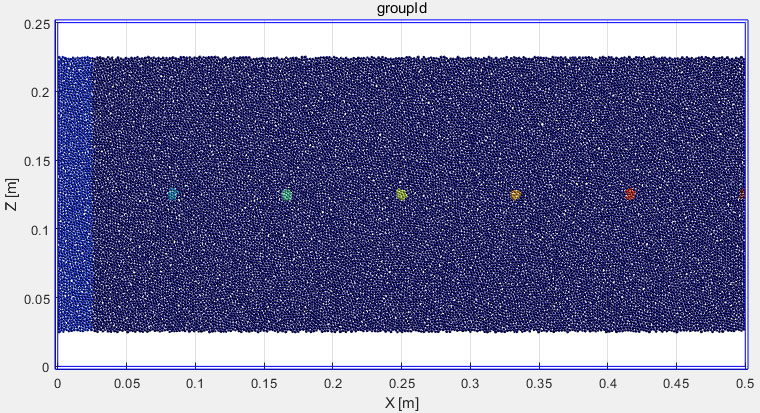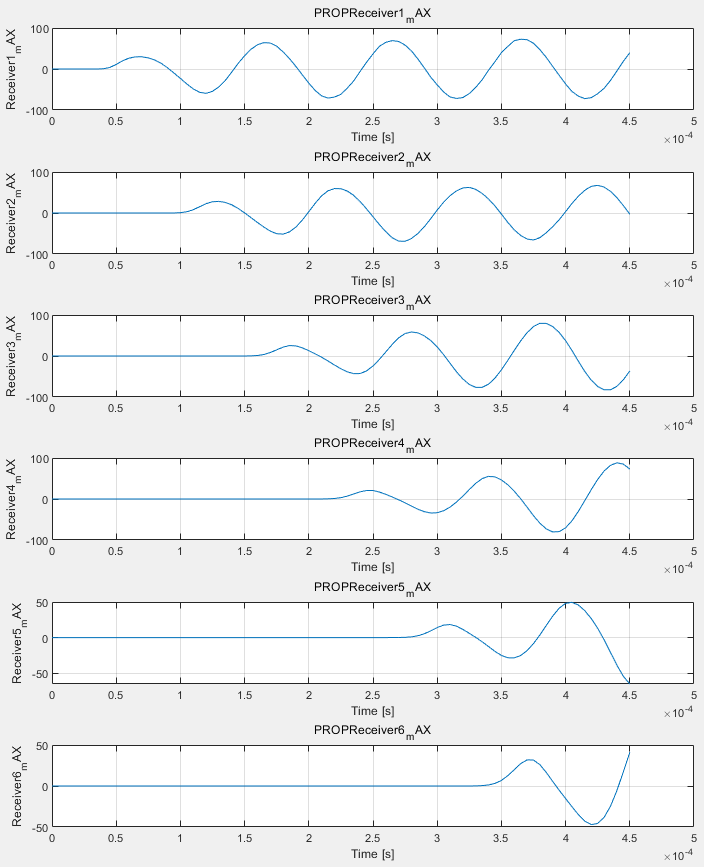Hopkinson pressure bar experiment (vibration excitation and reception)
Matrix discrete element (matdem) 1.94 updates the user_BoxWave1~3 example,that two functions of d.addtimeprop and d.addrecordprop are added to realize vibration excitation and recording functions respectively, which can be used for simulation and analysis of various dynamic processes.For example, through more than 100 lines of secondary development code, the following sample model is established. The left block is the source block, and six vibration signal receivers are deployed in the sample. In the numerical simulation, the specified compression or shear wave is applied to the left block by d.addtimeprop, and the dynamic action is simulated.The model contains 27,000 units. Using a laptop, the simulation takes 3 minutes and the real world is 4.5e-4 seconds.With simple improvements, this example can be used to simulate the Hopkinson pressure bar experiment.The software and examples can be downloaded at http://matdem.com.

Use the d.addTimeProp('leftBlock','mAX',Ts,Values) command to apply the seismic wave acceleration recorded by Ts and Values to the left block, causing it to generate a vibration (compression wave) with a frequency of 10000 Hz in the horizontal direction.The simulation results are as follows:

Use the d.addRecordProp(gName,prop1) command to record the acceleration of the six receivers, as shown below:

d.addTimeProp('leftBlock','mAZ',Ts,Values); Change the parameter mAX to mAZ, and the left block will generate shear waves.The following is the shear wave animation. Comparing the results of the compression wave, you can see that the shear wave has not reached the right side at the same time, and its speed is lower than the compression wave shown above.

For more examples, please see http://matdem.com.

